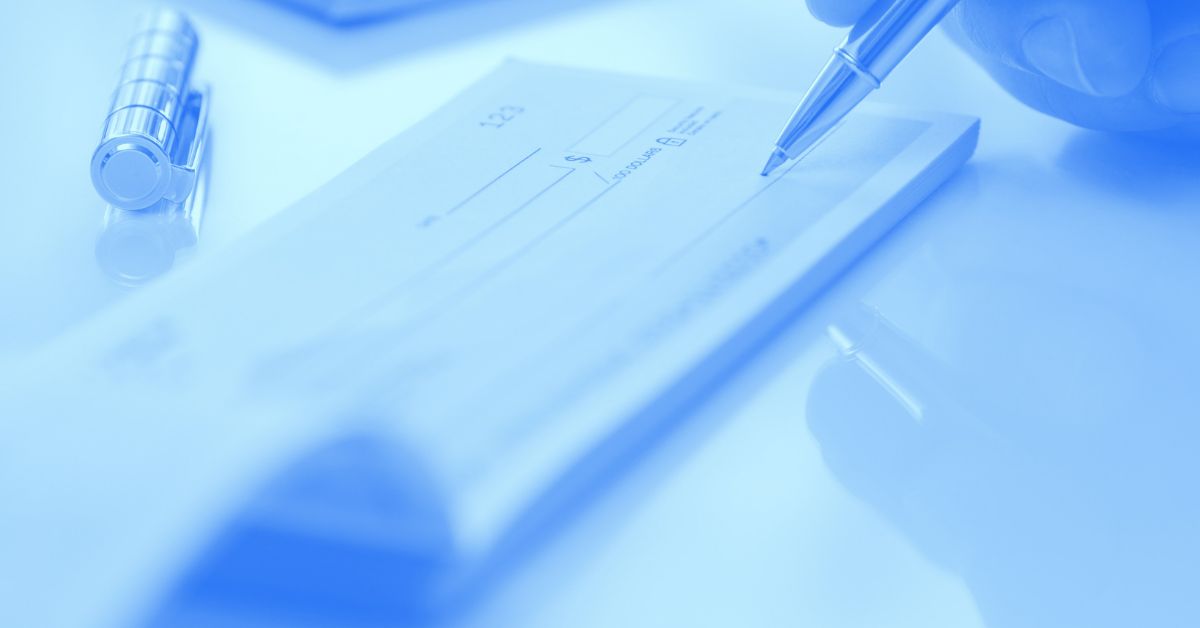Economic Impact Payments (AKA Coronavirus stimulus checks) started going out in April. For those with direct deposit on file with the IRS, payments began hitting accounts mid-month, while those getting physical checks began receiving them at the end of the month (and could potentially be waiting much longer).
If you’re still unclear on your eligibility, find out what you need to know about the CARES act. Verified that you are eligible but wondering where your payment is? Check out the IRS Get My Payment app to check on the status.
If you need the money to meet your immediate financial obligations, of course do that before anything else. If this is a little extra cash for you right now, rather than blowing this unplanned income on some shopping, check out my top four tips of what you can do with the cash to improve your financial situation instead.
1. Fortify Your Emergency Fund
The first place to consider putting your stimulus check is to simply use it to fortify your emergency fund savings. First make sure you have at least 3-6 months of expenses in savings before going out and making other investments. Generally, I recommend keeping 3 months of expenses in your checking account, and the rest can be in a high yield savings account or money market fund.
If you work in an industry with potentially unstable future income – consider increasing your emergency fund to up to 6-9 months of expenses. This is the money you want to be there for you before having to withdraw from other sources. Having a sufficient emergency fund can prevent you from being forced to sell your investments in a down market, running up credit cards, or having to pull money from somewhere that will result in an unnecessary tax bill come next April.
2. Save for Retirement
If you are fortunate enough to work for an employer that still offers a savings match on their employer sponsored retirement plan (such as a 401k or 403b), taking advantage of this should be your top priority. Not only does this savings vehicle offer you tax advantages, you are leaving money on the table if your employer matches your contributions and you are not contributing.
Keep in mind that you are not allowed to simply deposit your stimulus check into your 401k or 403b. What you should do instead, is request your employer to withhold future earnings towards your employer retirement plan (at least up to the amount your employer will match). Use the stimulus check in your bank account as a buffer to make up for your slightly smaller paychecks in the future.
Don’t need a tax break now but still want to save for retirement? Consider funding a Roth IRA. The Roth IRA has the benefit of being tax free when you make a qualified withdrawal. As a bonus, you can always access your original contribution amount tax and penalty free (like a back-up emergency fund!). Consult with a financial professional prior to contributing to a Roth IRA to verify that a Roth IRA makes sense given your situation, and that you are eligible to contribute.
3. Pay off Debt
Another good use for your stimulus check is to pay off debt. I recommend using a “debt avalanche” strategy to do this. This involves making minimum payments on all your loans and allocating any extra dollars towards your highest interest rate loan. Once your highest interest rate loan is paid off, begin chipping away at the next one.
You may want to consider refinancing high interest debt into lower rates if possible due to a low interest rate environment. If you have student loans, you should do your research first or consult with a Certified Student Loan Professional (CSLP®) before deciding to pay off your loans or refinance them. Failing to do so could be a 6-figure mistake in some instances and can get complicated due to the number of different types of student loans and government programs that exist.
Now is also a good time to also re-evaluate your relationship with debt. Debt can be particularly stressful when income is less stable and other investments are down. Use this as an opportunity to get organized and create your plan to get out and stay out of debt.
4. Invest
The most frequent thing I’m asked is “What should I invest in?” For many, the right question really is “Should I be investing?
The only time it makes sense to begin looking at other investments is when:
- You have an ample emergency fund
- You are contributing to your existing employer retirement plan at least up to the amount your employer will match contributions
- Your debt is under control and you either:
- Are debt free
- Have no high interest debt (I use 5% as a general rule of thumb, but this can differ based on the individual situation)
- Your only debt is student loan debt, and you have written plan on paying them back or qualifying for loan forgiveness
When you have met the above criteria, it may make sense to invest any remaining funds. When making investments, my general tips are:
- Consider your investment strategy in light of how long you plan to keep the money invested (time horizon)
- Consider your investment strategy in light of how comfortable you are with your accounts being down (risk tolerance)
- Keep your investing expenses and costs down – consider low cost index funds
- Invest in a diversified portfolio
- Remain tax aware with account types and trading strategies
- Rebalance your portfolio regularly
- Avoid speculating on individual stocks or other investments
- Remember that you are investing for the long term and to stay the course
If you’re not sure how to go about navigating these various aspects of your finances, consider hiring a fee-only, fiduciary, CERTIFIED FINANCIAL PLANNER™ professional to help. Check out my guide on what to look for in a financial advisor to avoid mistaking a commission-based salesperson for a qualified financial advisor.



.png?width=661&name=2020%20Blog%20Template%20(57).png)
 About the Author
About the Author

